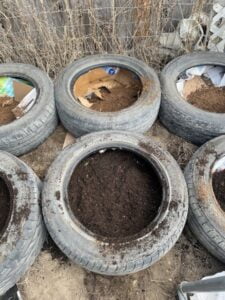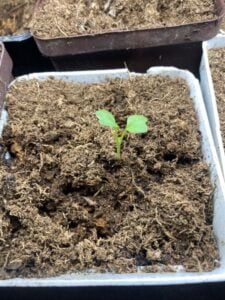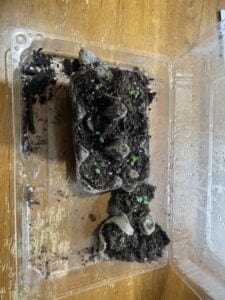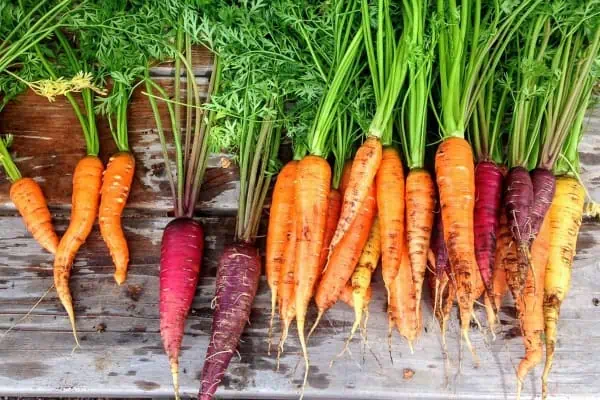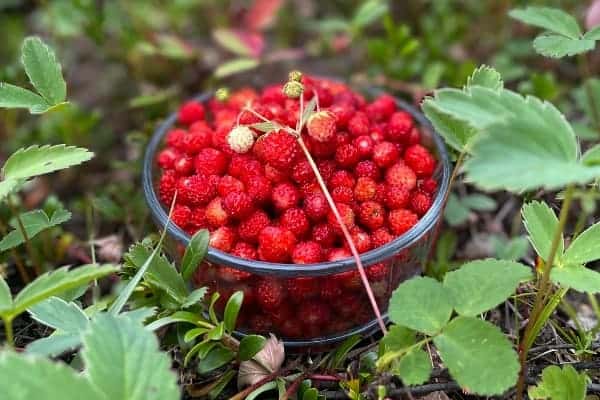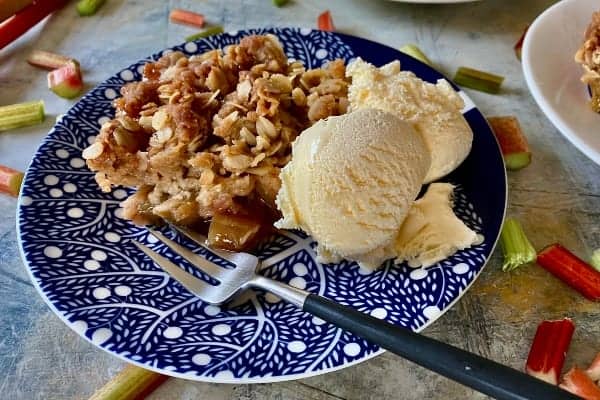Gardening doesn’t have to be expensive, if you’re clever
Gardening is, at its core, about growing food (and creating pleasure) for your own consumption, outside of the modern food chain of large-scale industrial farming, shipping and consumption. There are lots of reason people might want to do this — growing organic, fresh produce that’s available direct to you when you want it, control over what you eat, the emotional rewards of taking care of something, or improving your personal food security — but regardless of your reasons, one thing every gardener can agree on is that it can be very expensive.
It doesn’t have to be, though, if you’re clever (and willing to sacrifice form for function, which is something I’m always willing to do). This series, The Radical Gardener, will look at ways in which working class people (or people who just want to save some scratch) can approach creating, caring for and maintaining a food garden — something which, given the uncertainty of these times, seems like a pretty good idea. The information herein and moving forward is the result of my own work as an organic farm hand in Alberta, British Columbia and Quebec, as well as my personal experimentation with gardening for foodsecurity here in the Yukon. I will be focusing on food-producing plants only, as ornamental gardening — while a source of joy for many — does not facilitate the highly productive outcome we are discussing here, namely, putting healthy food on your plate.
In this installment, we’ll be looking at one of the most expensive aspects of gardening; the set up.
1) Starting seeds doesn’t mean you need fancy store-bought planters. Egg cartons and take-away coffee cups make great temporary pots for starting plants (as well as reusing things that would often end up in the trash, or have to be trucked down as recycling). Simply put the dirt in, plant the seed and, when you’re ready to transplant, peel off the cardboard. You can even leave one side attached and put the cardboard right into the ground, to avoid disturbing those tender baby roots. The clear, plastic containers baked goods often come in make amazing mini-greenhouses for seedlings, especially for starting slow-growing herbs.
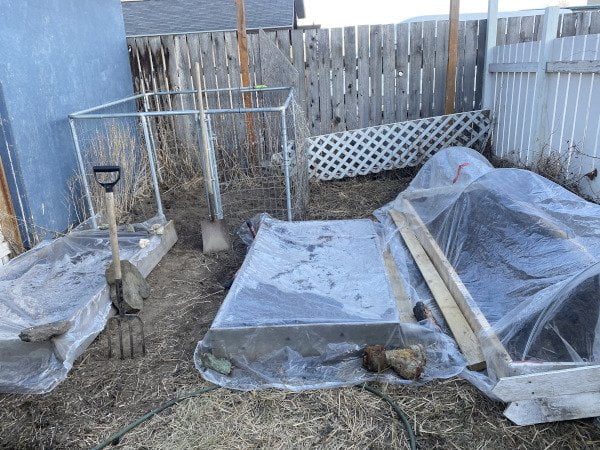 2) Here in the Yukon, raised beds are pretty much essential; we have a short growing season, the ground stays cold a long time, and we can get frost pretty much whenever nature feels like giving it to us, all of which a solid raised bed helps alleviate. Fancy new lumber, however, can be pricey — and difficult to go pick up, if you don’t have a car — and building things requires that you have tools. Some people use large plastic tote bins, but I find those quite expensive. If you have some already around, they might be a suitable alternative — if you go this route, remember to drill some holes in the bottom of the bin (or, alternatively, punch them with a nail and hammer) to facilitate proper drainage (which makes for happy plants).
2) Here in the Yukon, raised beds are pretty much essential; we have a short growing season, the ground stays cold a long time, and we can get frost pretty much whenever nature feels like giving it to us, all of which a solid raised bed helps alleviate. Fancy new lumber, however, can be pricey — and difficult to go pick up, if you don’t have a car — and building things requires that you have tools. Some people use large plastic tote bins, but I find those quite expensive. If you have some already around, they might be a suitable alternative — if you go this route, remember to drill some holes in the bottom of the bin (or, alternatively, punch them with a nail and hammer) to facilitate proper drainage (which makes for happy plants).
For my garden, I have several raised beds, all repurposed from found scrap, including using old fence posts which had already been sized accordingly, and put together with cheap nails and a dollar-store hammer. They aren’t beautiful, but it does the job required of it, which is that it holds dirt. It is imperative, however, that you never use treated wood — such as that recovered from railroad ties or telephone poles, for example — as the chemicals in these products can leach into soil and are quite toxic. Treated wood has a green hue to it, so it’s quite easy to spot.
3) Old tires make great raised planters, as they are stackable, hold-in heat (which means they increase the ambient temperature of soil, something heat-loving plants, like potatoes, adore). They are also a huge environmental problem, as they take a very long time to break down, causing them to pile up in landfills, and disposing of them by burning causes them to release toxic chemicals, and you can often just get them for free.
There are people who won’t use old tires, on the argument that tires contain chemicals, but how quickly tires degrade (not very) and leach, and whether or not they are a health risk to people has been debated widely. If it worries you, you can line them with plastic sheeting — available cheaply by the roll from any hardware store. For me, using tires is a cheap and effective method of creating growing space, as well as an environmentally conscious one, so I do it.
4) Soil need not be expensive — yes, you can get super expensive fancy bags, but I use simple blackearth and manure, supplemented with peat for improved drainage. I also use lots of City of Whitehorse compost, available at the waste management facility, which is inexpensive and local, derived entirely from the contents of Yukoner’s green bins. Can you guarantee it’s 100 per cent certified organic? Nope. If that matters to you, spring for the fancy stuff.
5) When building beds, take a shovel or edger and carefully break up the soil, flipping sod root-side up and leaving it exposed (for the grass to die) and removing any weeds, such as a foxtail, as they are rather good at surviving such treatment. Level out the bed (your boots will do) and then take cardboard and cover the bed area with at least two layers before pouring in the soil. This helps your garden bed stay weed-free, and the cardboard will eventually break down.
However you choose to set up your garden, remember that increased cost does not always mean increased output; there’s a balance to be had between “quality” and “price” and more expensive — isn’t always better. Virtually anyone with access to an outdoor space — even just a small balcony can have a perfectly acceptable vegetable garden with a small price tag and a medium amount of effort.

